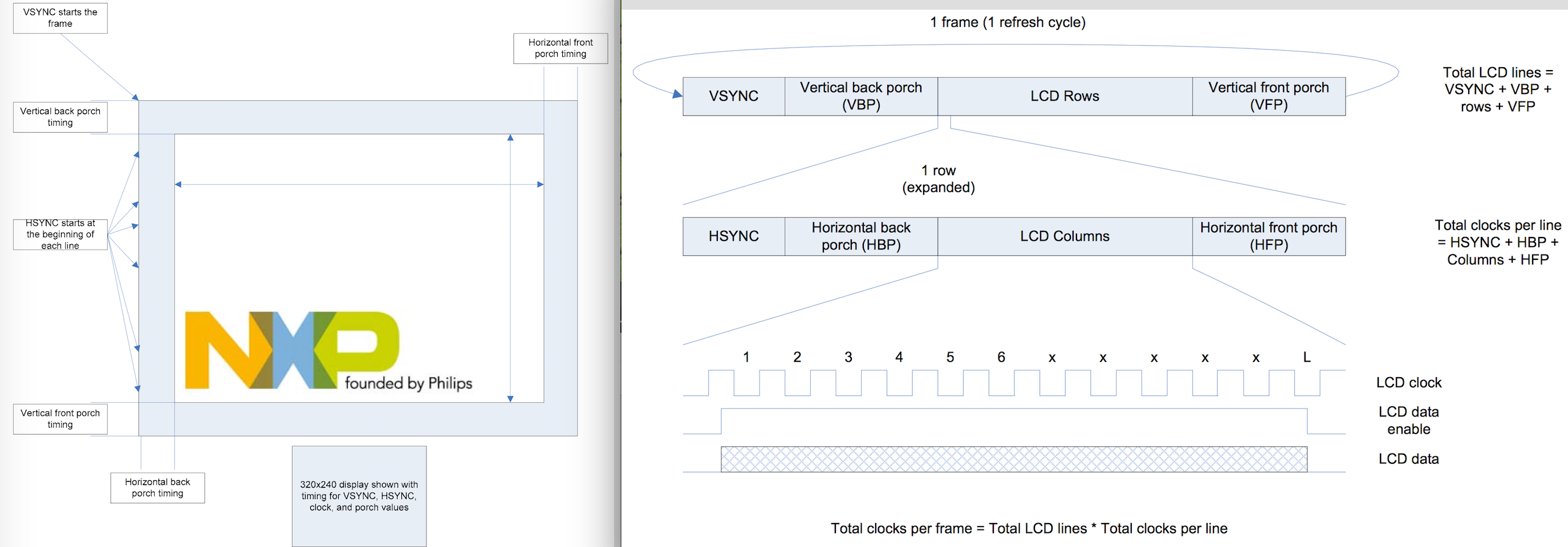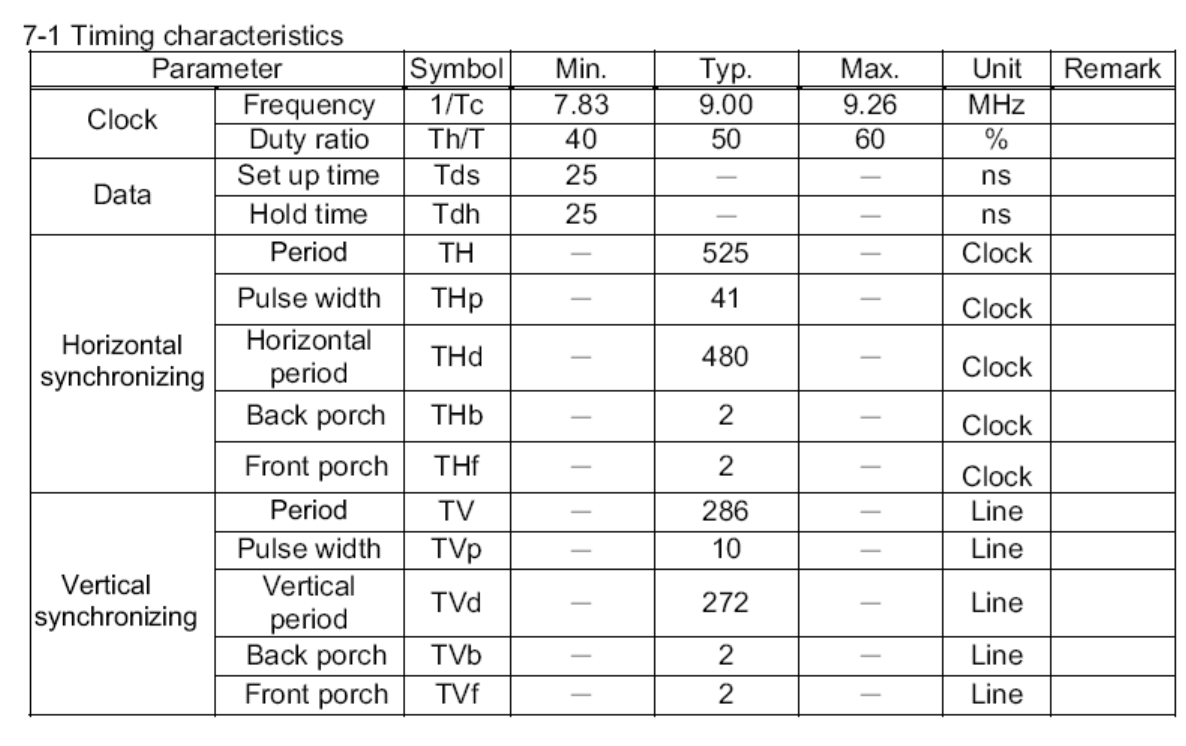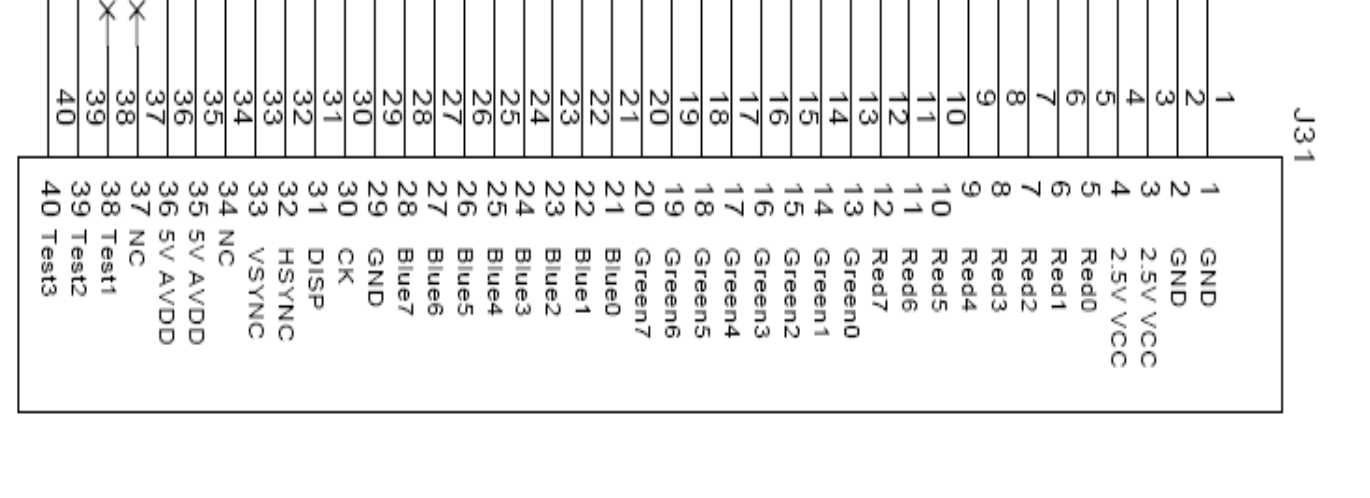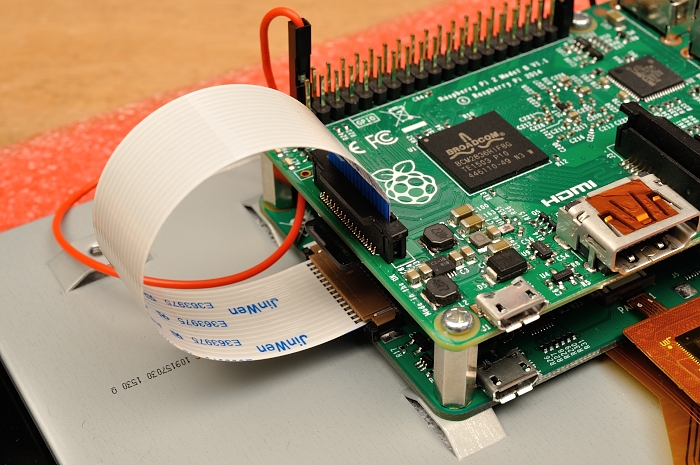LCD Display
How does an LCD works?
 [2]
[2]
LCD stands for Liquid Crystal Display, it takes the advantage of the crystal can be moved by electric field. The crystals do not emit light, but they can block light. The crystals can be placed perpendicular to the light source
by a proper electric field so that they allow the light that comes from backlight source to pass. A crystal and the component that controls the crystal compose a segment. A pixel consists 3 segment for red, green and blue.
 [3]
[3]
The TFT display can drive 3 segments (1 pixel) at each time (one clock cycle). And to control a pixel, 24 lines (bits) may be required (The actual number of bits depends on the color level).
Therefore, it requires 320 cycle to fully set an 320-pixel display.
The TFT-LCD requires 4 basic timing signals (时序信号): VSYNC, HSYNC, LCDCLK and D0...DXX.
Terms
- VSYNC (Vertical Sync): Used to reset the LCD row pointer to top of the display.
- HSYNC (Horizontal Sync): Used to reset the LCD column pointer to the edge of the display.
- LCDCLK (LCD clock): Used to panel control refresh rate
- D0...DXX(1 or more data lines): transfer RGB value.
Other additional timing signals: LCD power, backlight power, touchscreen.
LCD working timing
LCD display is refreshed row by row from top to bottom. A refresh timing starts with the VSYNC signal. Inside each row, it refreshs column by column from left to right starting with HSYNC. Each LCD clock sets one pixel.
 [3]
[3]
LCD characters LQ043[3]

Suppose the clock frquency is 9MHz. One cycle is 1/9 us. Refreshing one line is 525 / 9 us. Refreshing one frame is 525 / 9 * 286 = 16683 us. The frequency is 1000,000 / 16683 = 59.9 Hz.
Important parameters of a TFT display
- horizontal sync frequency: frquency of writing a horizontal line.
- vertical sync frequency: frquency of refreshing a frame
- bandwidth:
- dot clock:
 [2]
[2] [3]
[3] [3]
[3]
 [3]
[3] [4]
[4]